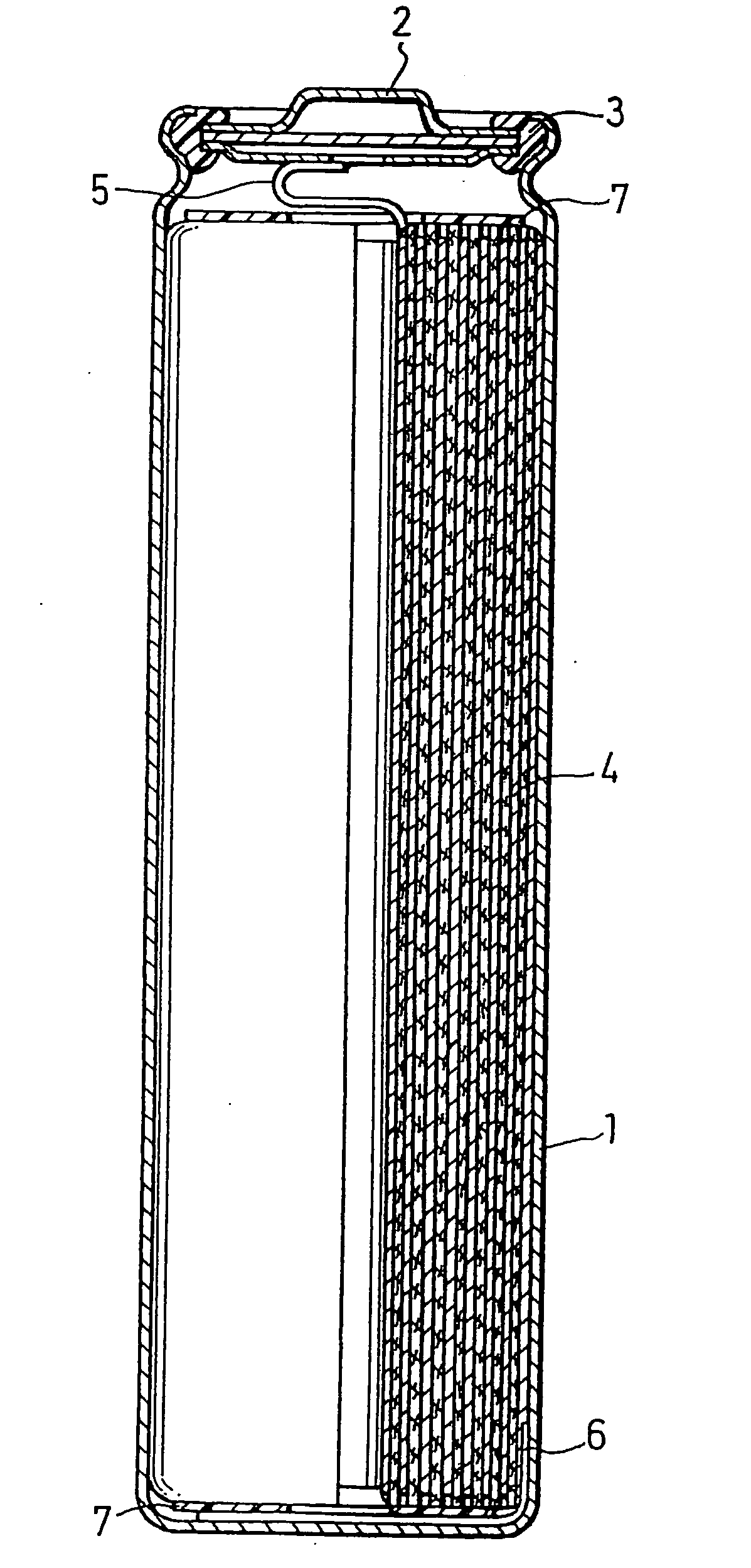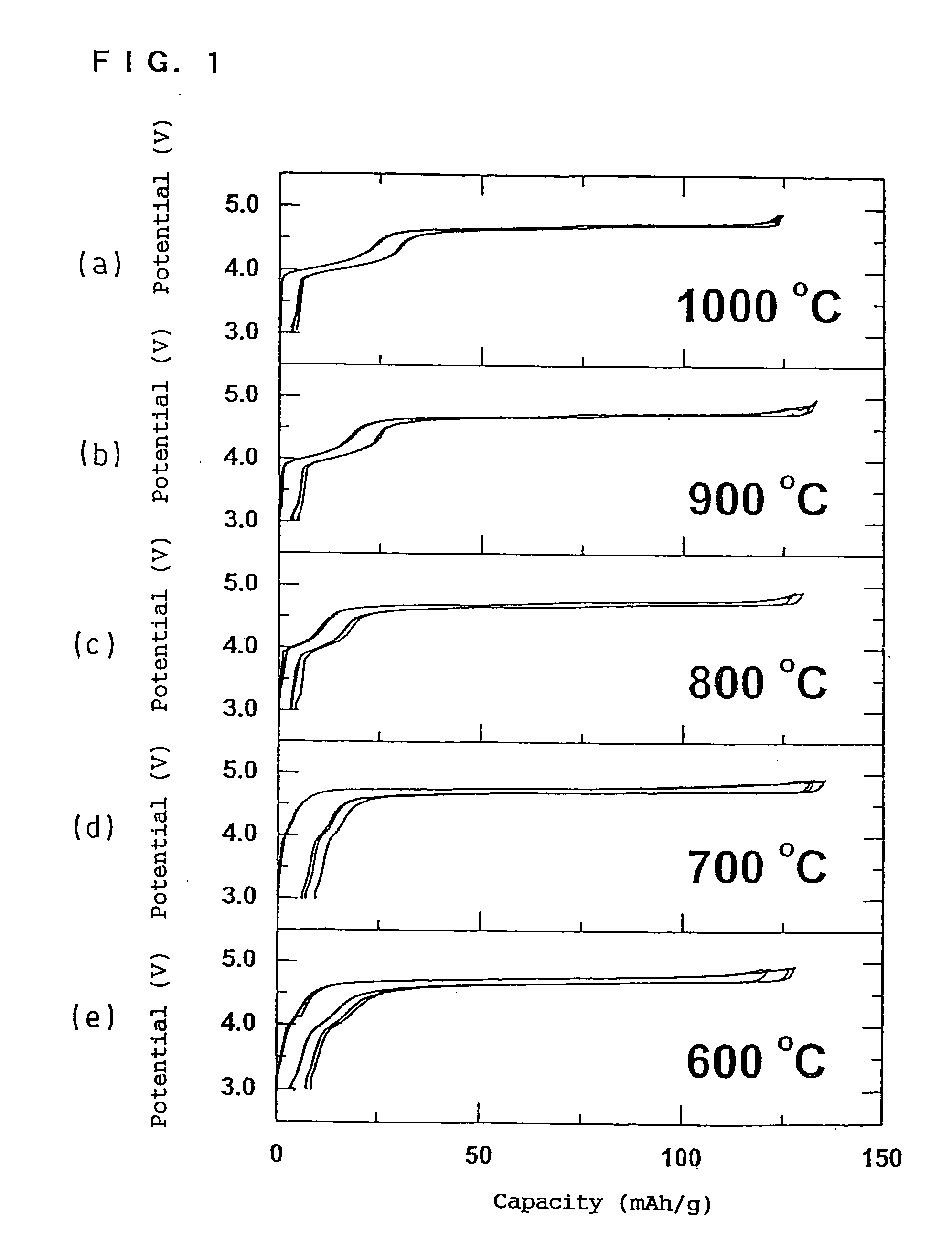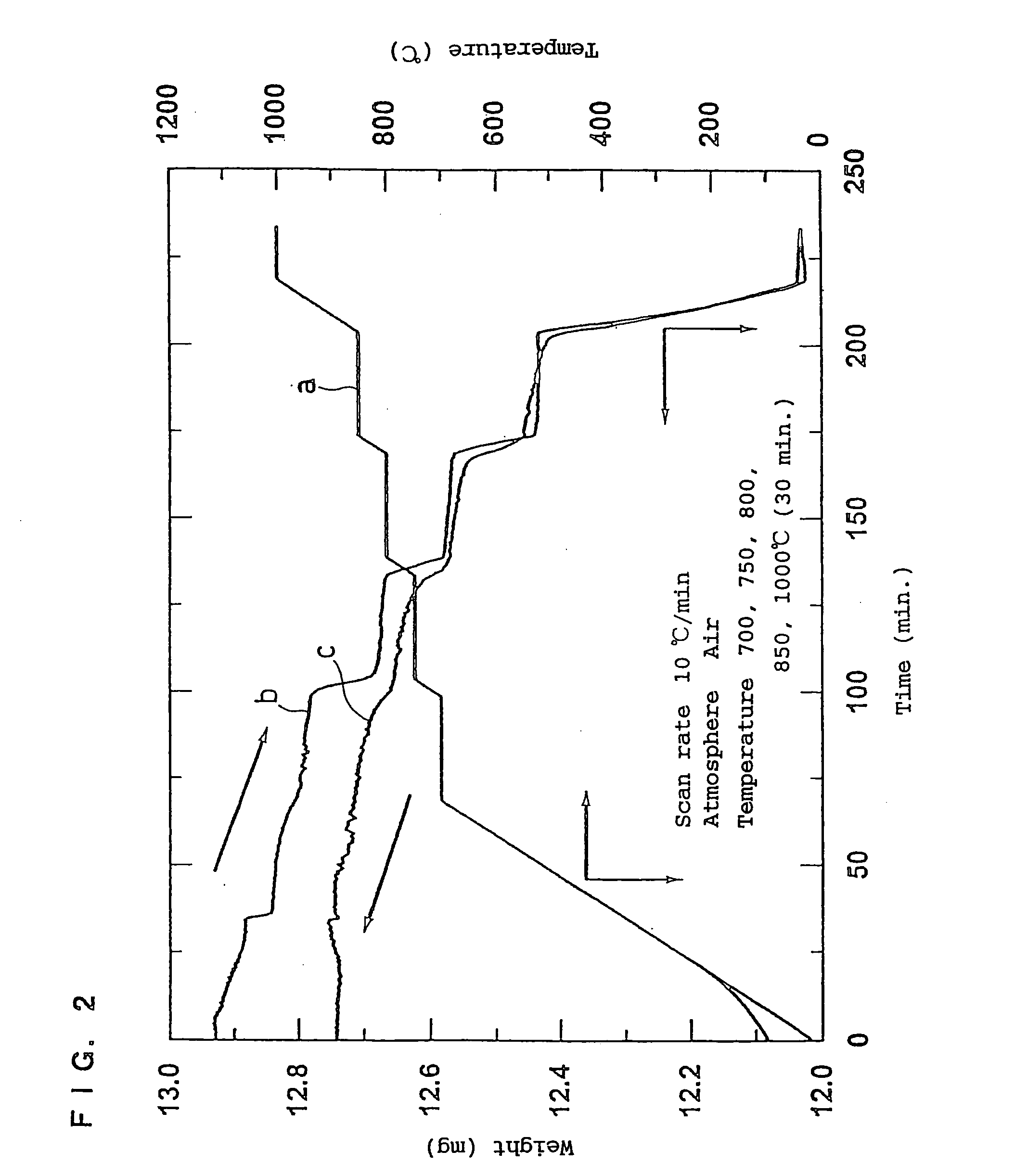Positive electrode active material, production method thereof and non-aqueous electrolyte secondary battery
a technology of active materials and positive electrodes, applied in sustainable manufacturing/processing, alkali titanates, nickel compounds, etc., can solve the problems of reducing the cycle life, difficult to maintain a flat charge/discharge voltage, and difficulty in maintaining cycle life by conventional techniques
- Summary
- Abstract
- Description
- Claims
- Application Information
AI Technical Summary
Benefits of technology
Problems solved by technology
Method used
Image
Examples
case 1 (fig.5)
(i) Case 1 (FIG. 5)
[0107] The first baking was performed by increasing the temperature from room temperature to 1000° C. for about 3 hours and holding the temperature at 1000° C. for 12 hours. After the first baking, the temperature was decreased from 1000° C. to room temperature for 2 hours (cooling rate of 8° C. / min.).
case 2 (fig.6)
(ii) Case 2 (FIG. 6)
[0108] The first baking was performed by increasing the temperature from room temperature to 1000° C. for about 3 hours and holding the temperature at 1000° C. for 12 hours. The second baking was performed by decreasing the temperature from 1000 to 700° C. for 30 minutes and holding the temperature at 700° C. for 48 hours.
[0109] After the second baking, the temperature was decreased from 700° C. to room temperature for 1.5 hours (cooling rate of 7.5° C. / min.).
case 3 (fig.7)
(iii) Case 3 (FIG. 7)
[0110] The first baking was performed by increasing the temperature from room temperature to 1000° C. for about 3 hours and holding the temperature at 1000° C. for 12 hours. After the first baking, the temperature was rapidly cooled from 1000° C. to room temperature.
[0111] The second baking was performed by increasing the temperature to 700° C. for about 1 hour and holding the temperature at 700° C. for 48 hours.
[0112] After the second baking, the temperature was decreased from 700° C. to room temperature for 1.5 hours.
PUM
| Property | Measurement | Unit |
|---|---|---|
| particle size | aaaaa | aaaaa |
| particle size | aaaaa | aaaaa |
| temperature | aaaaa | aaaaa |
Abstract
Description
Claims
Application Information
 Login to View More
Login to View More - R&D
- Intellectual Property
- Life Sciences
- Materials
- Tech Scout
- Unparalleled Data Quality
- Higher Quality Content
- 60% Fewer Hallucinations
Browse by: Latest US Patents, China's latest patents, Technical Efficacy Thesaurus, Application Domain, Technology Topic, Popular Technical Reports.
© 2025 PatSnap. All rights reserved.Legal|Privacy policy|Modern Slavery Act Transparency Statement|Sitemap|About US| Contact US: help@patsnap.com



